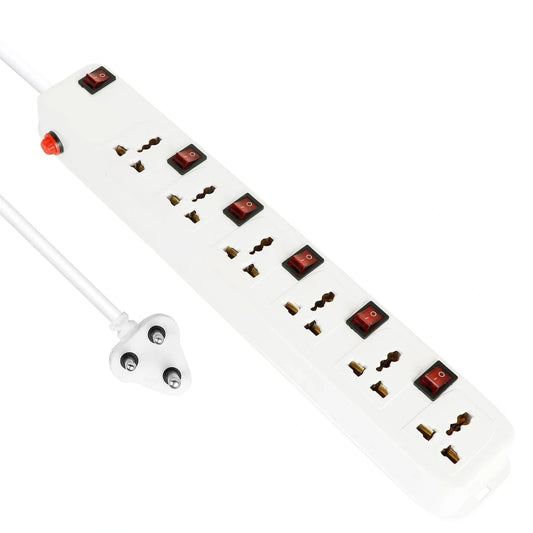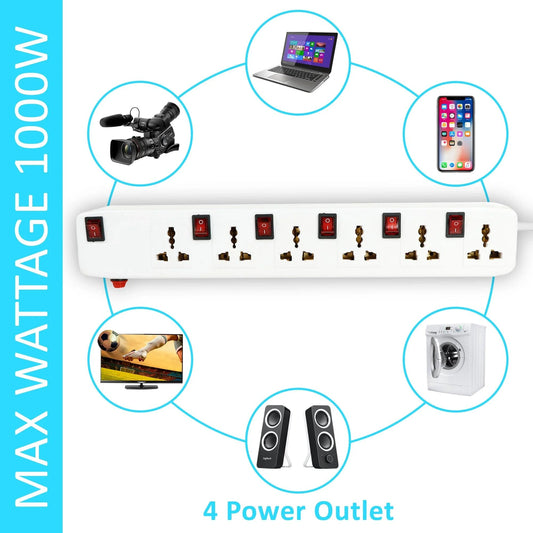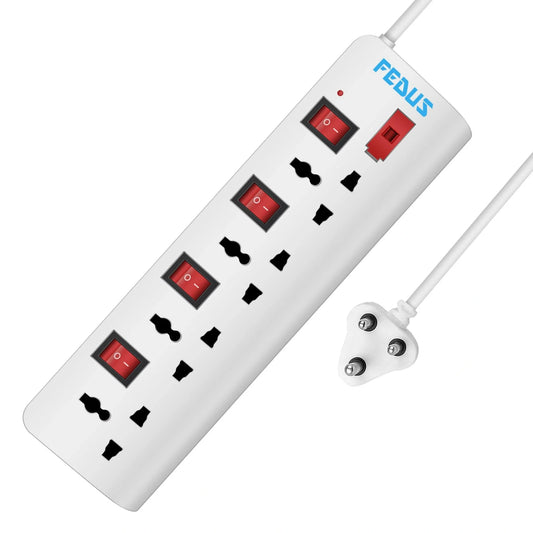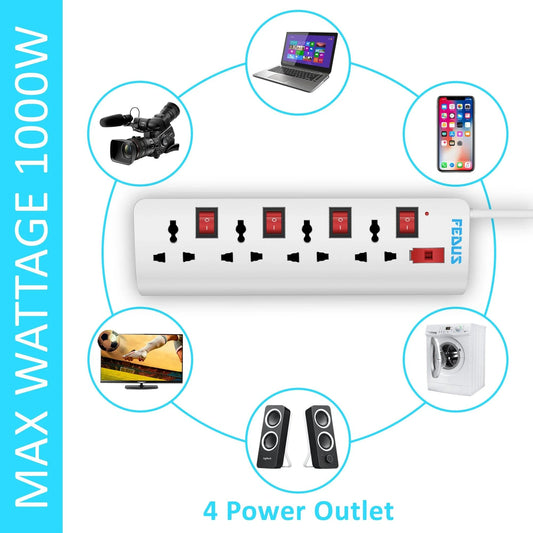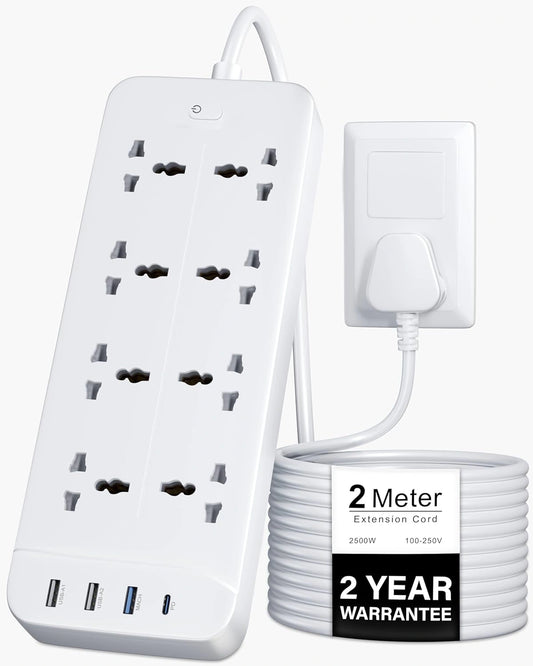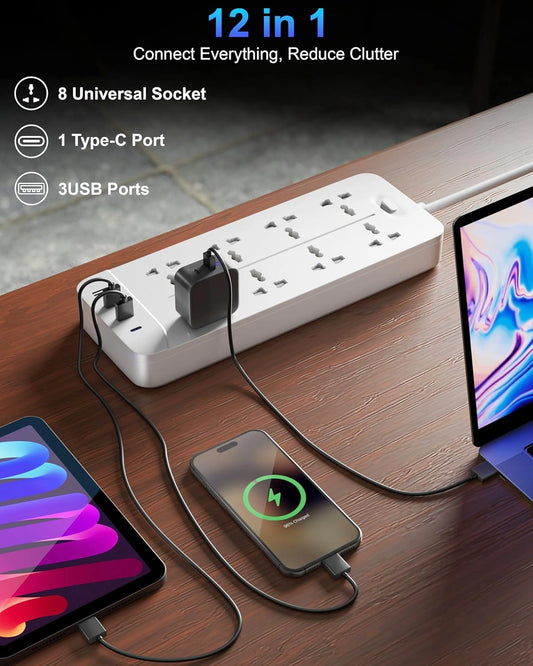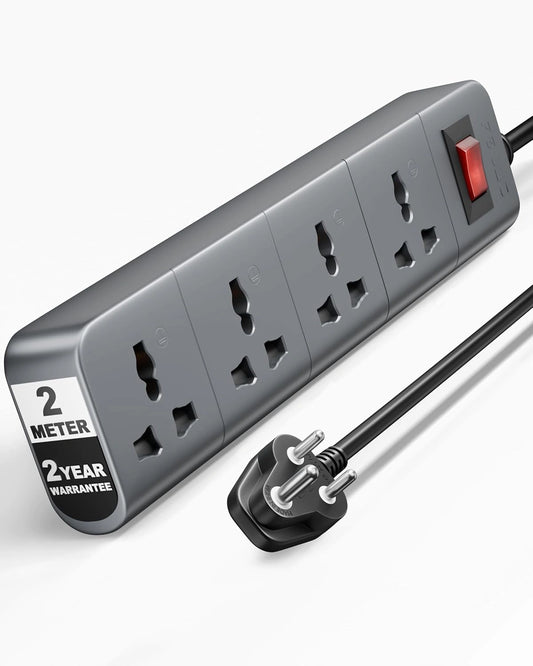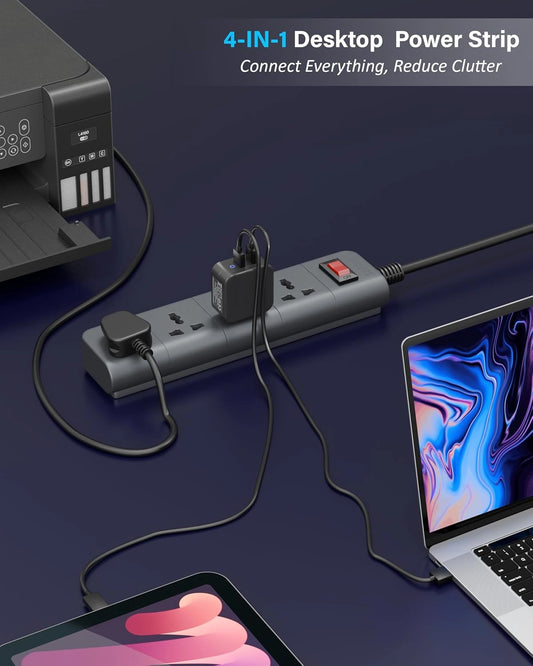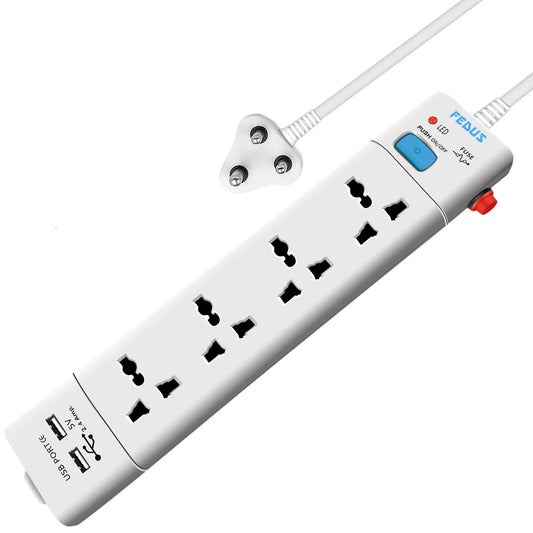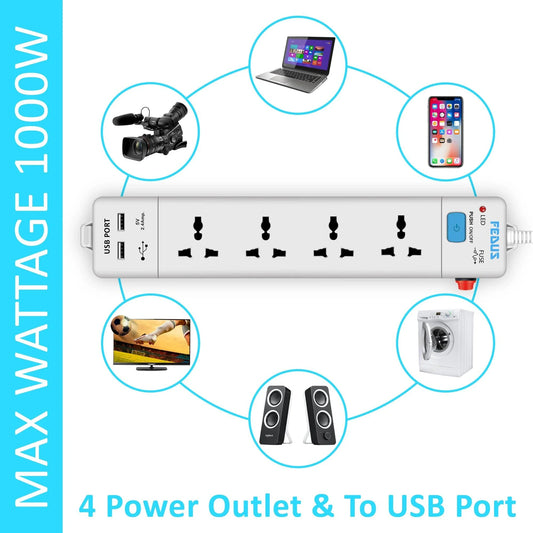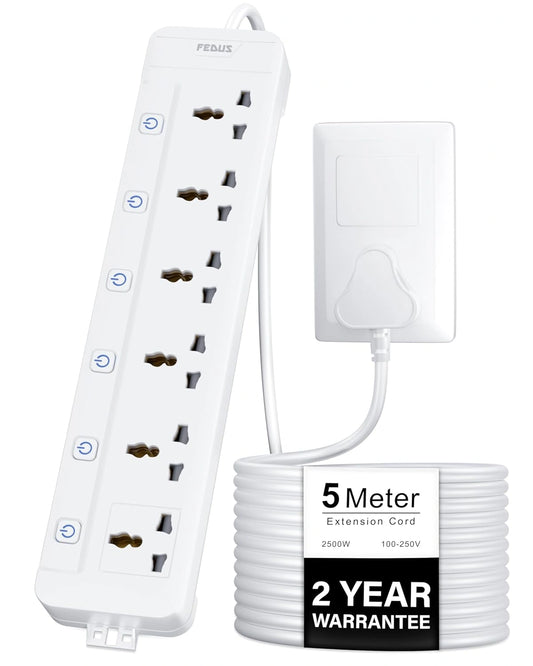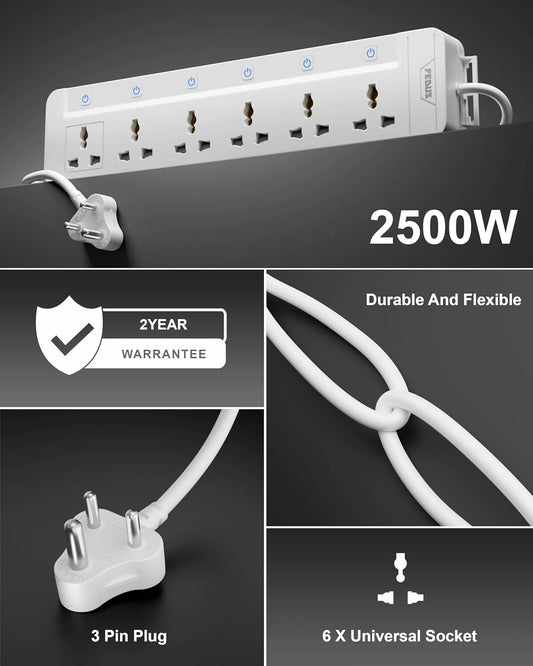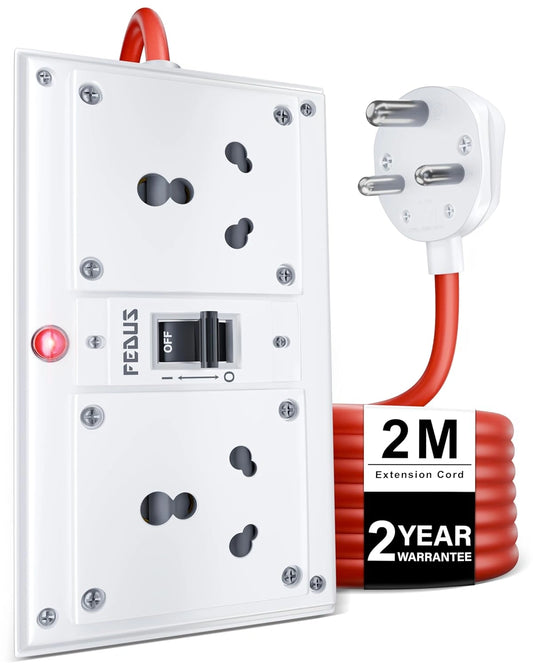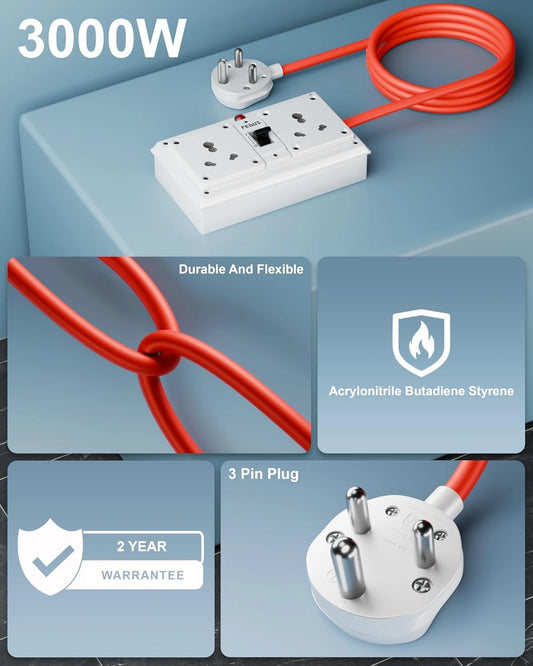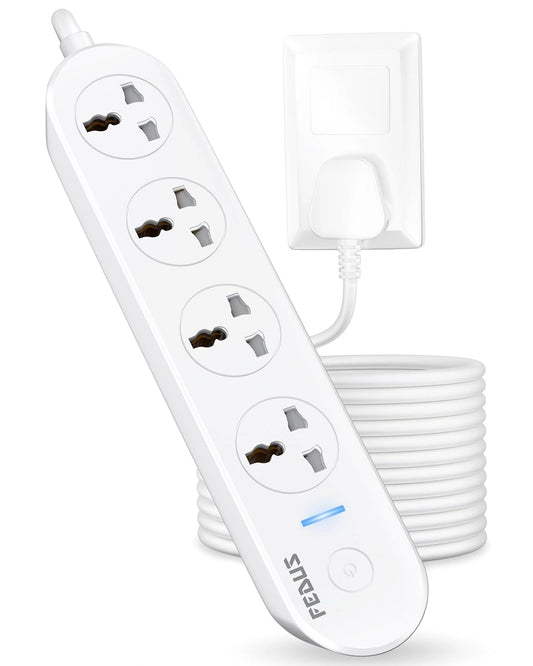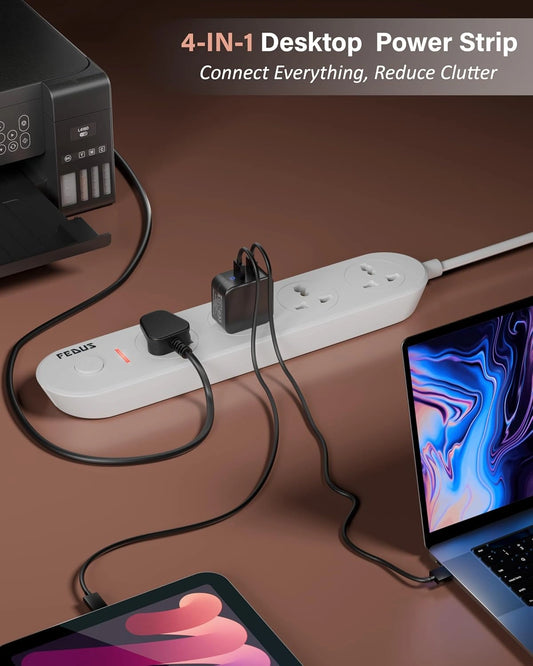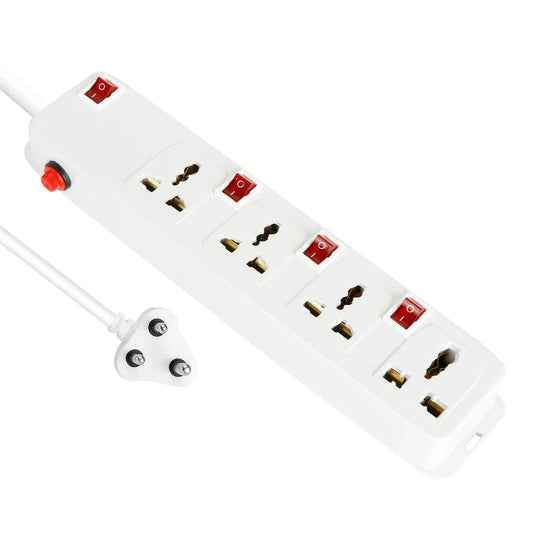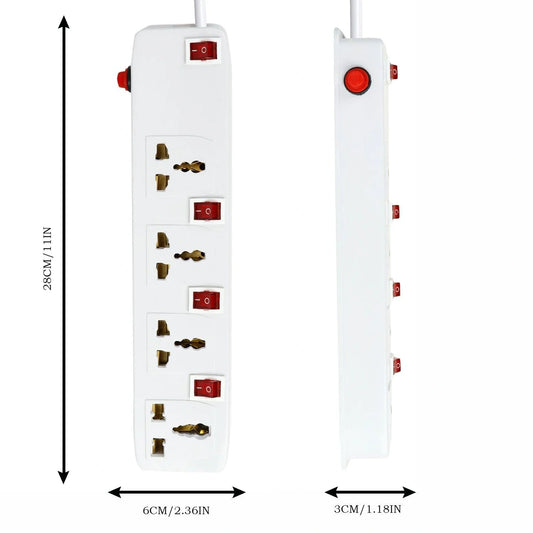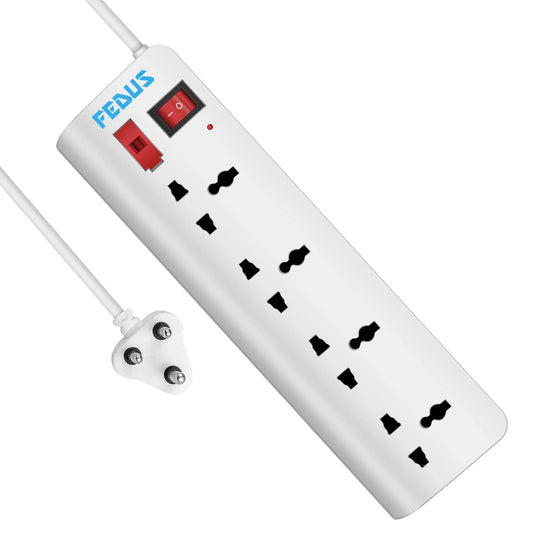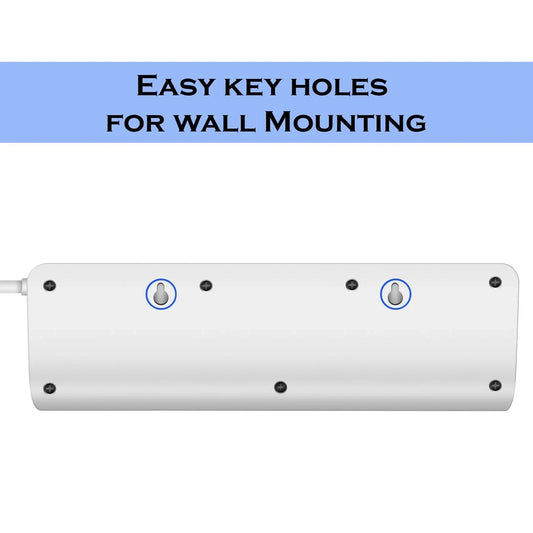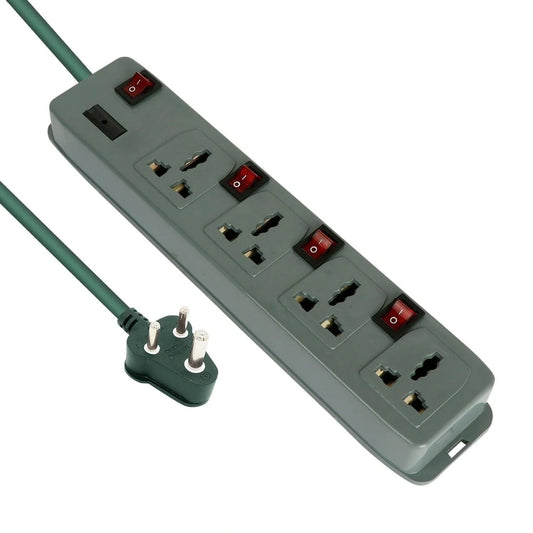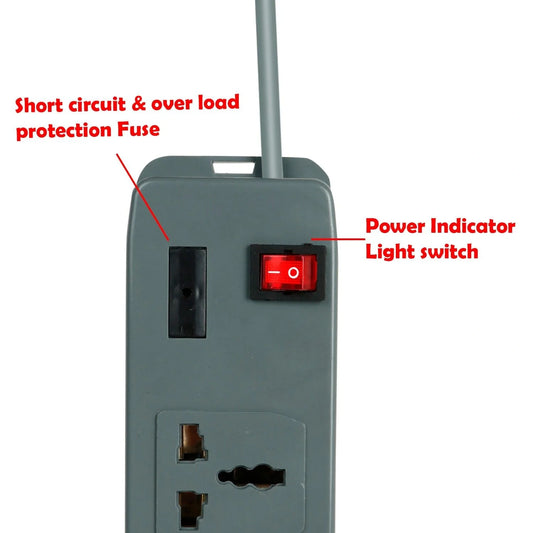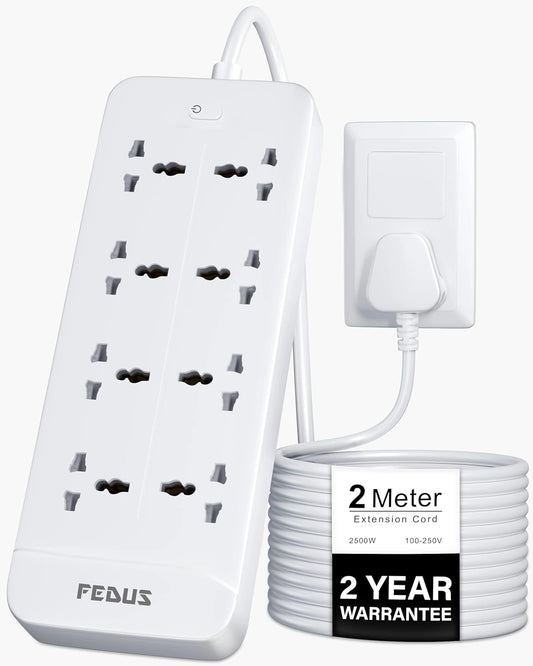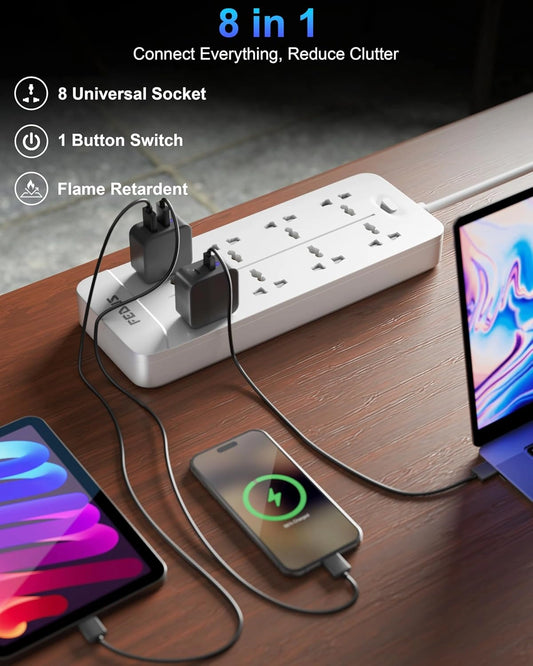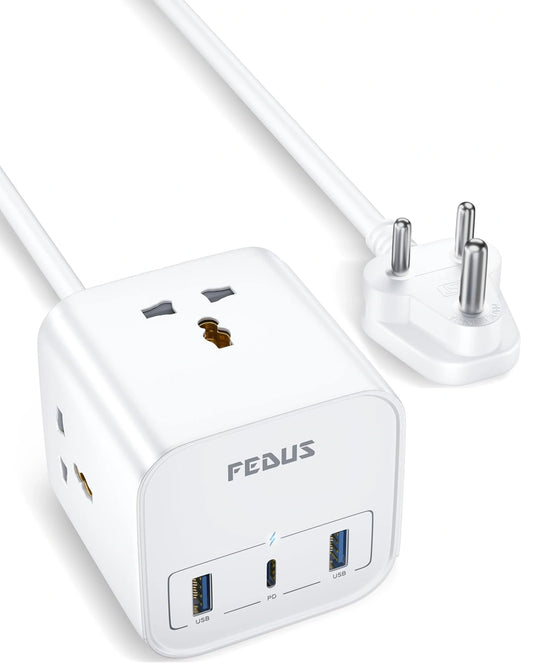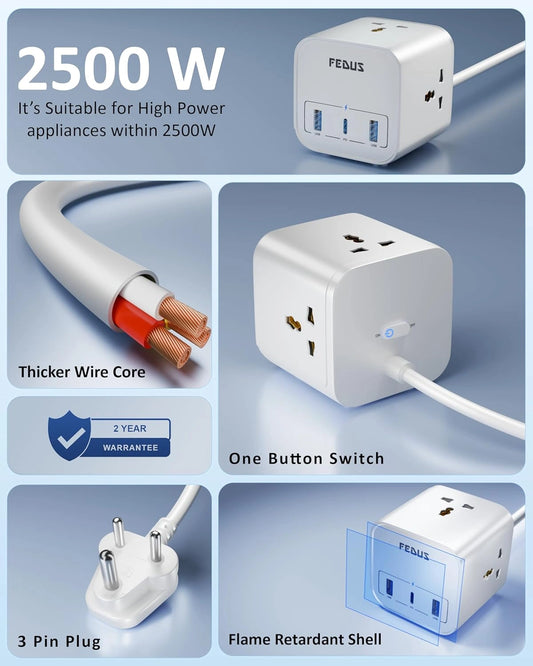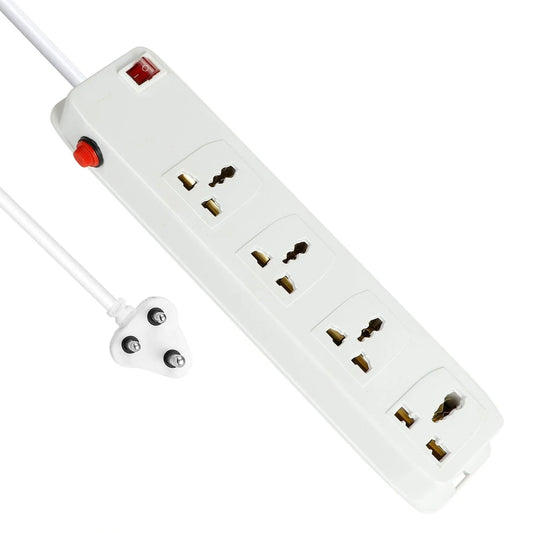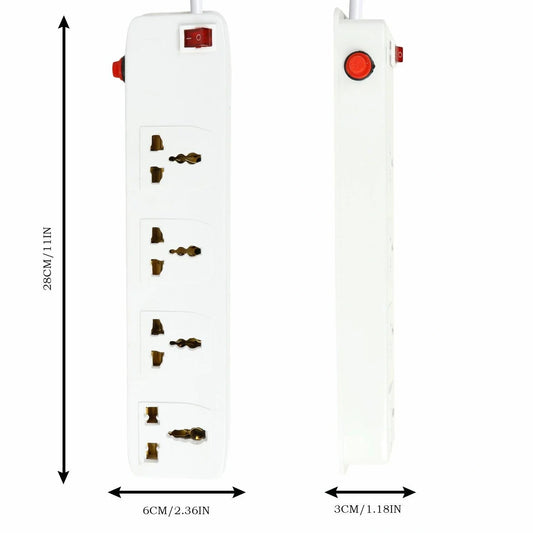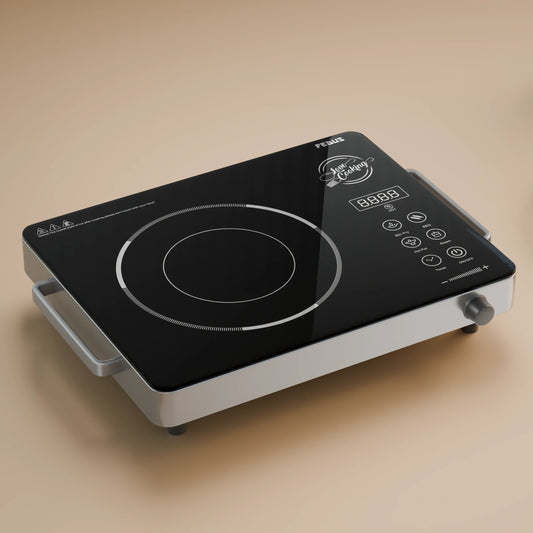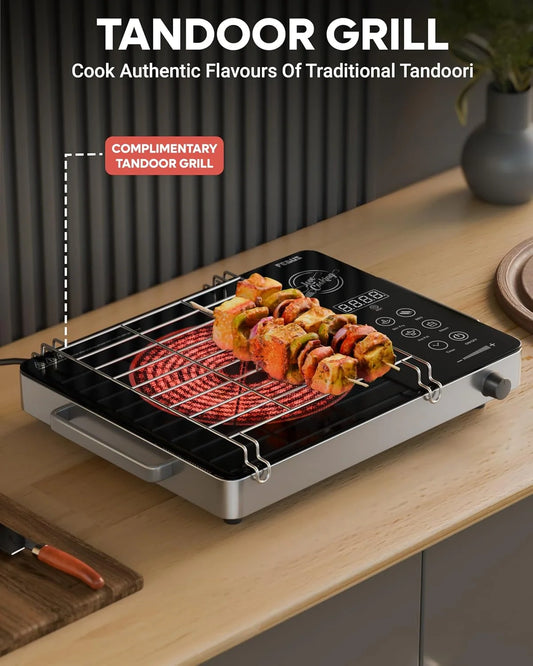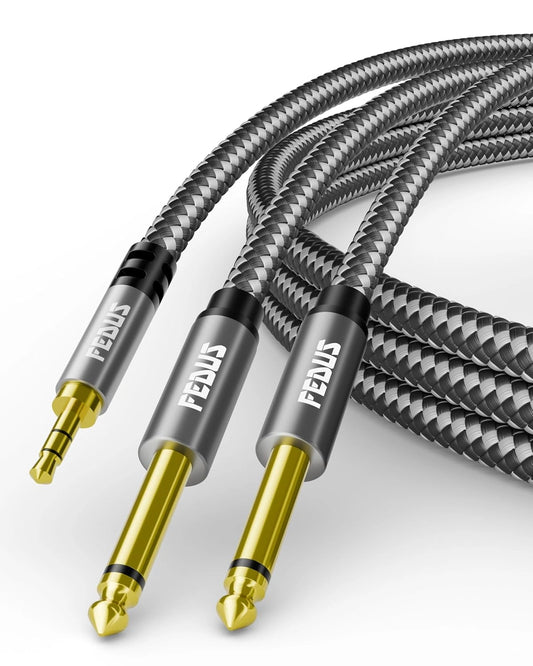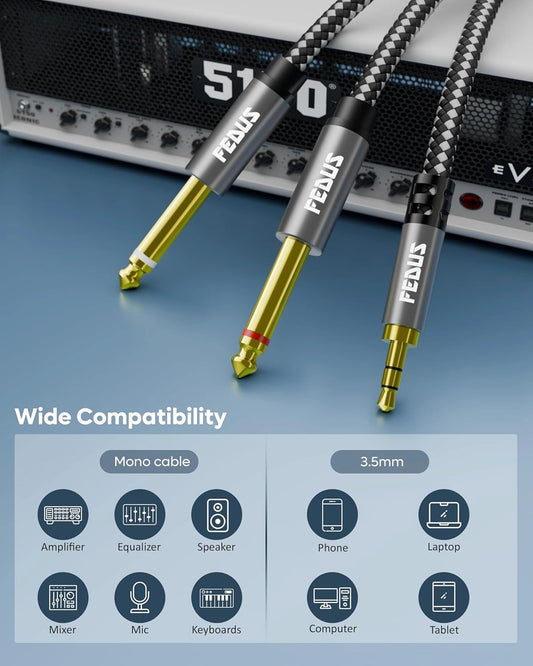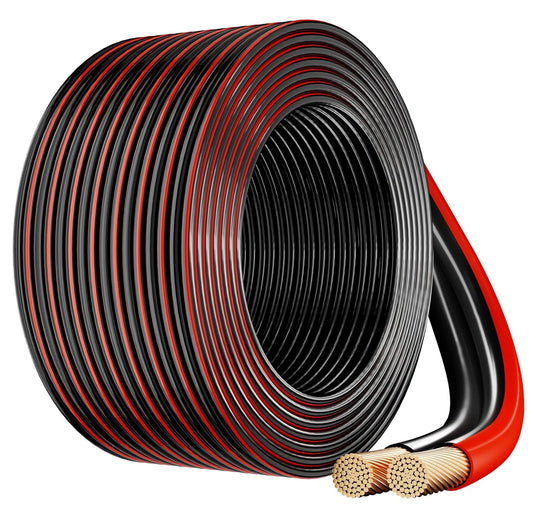Filter
15 results
20
- 10
- 15
- 20
- 25
- 30
- 50
Best selling
- Featured
- Best selling
- Alphabetically, A-Z
- Alphabetically, Z-A
- Price, low to high
- Price, high to low
- Date, old to new
- Date, new to old
Sort
Sort by:
- Featured
- Best selling
- Alphabetically, A-Z
- Alphabetically, Z-A
- Price, low to high
- Price, high to low
- Date, old to new
- Date, new to old
-
FEDUS extension-cords, Long Extension Board Extension Box | Spike Guard 6 Socket 6 Switch Junction Box with Switch, Extension Cords Cord, Spike Buster, Extension Board
SOCKET TYPE - 6+6 power strip which comes with 6 international sockets & 6 Master LED switch, which is suitable for different types of plugs used over 180 countries including US, UK, Germany, Australia, NZ, Japan, China, India, and Others HEAVY-DUTY SOCKET - Compatible...- from ₹. 719.00
- from ₹. 719.00
- Unit price
- / per
-
FEDUS Extension Boards, Long Wire Switch Board Extension | Extension Boards with Switch,Extension Board with Long Wire, Extension Board for Computer, Surge Protectors Spike Buster, Switch Board
▶SOCKET TYPE - 4+4 power strip which comes with 4 international sockets & 4 Master LED switch, which is suitable for different types of plugs used over 180 countries including India, US, UK, Germany, Australia, NZ, Japan, China, and Others ▶HEAVY-DUTY SOCKET - Compatible...- from ₹. 579.00
- from ₹. 579.00
- Unit price
- / per
-
FEDUS Surge Protector, 8 Universal Sockets with USB Port Type A & C, Long Cable, Extension Board Cord, Automatic Overload Protection, Fireproof Power Strip Switch Board, Spike Guard
▶12 IN 1 POWER STRIP WITH 8 AC OUTLETS, 3 USB & 1 TYPE C PD PORT: Power everything on your desk with a single compact surge-protected extension cord. 8AC wide outlets and 4 USB (1 USB C) charging ports can power up to...- from ₹. 1,614.00
₹. 2,900.00- from ₹. 1,614.00
- Unit price
- / per
-
FEDUS Surge Protector, 4 Universal Sockets with Individual Switch, Long Cable, Extension Board Cord, Automatic Overload Protection, Fireproof Power Strip Switch Board, Spike Guard, Grey
▶4 IN 1 POWER STRIP WITH MASTER SWITCH: Power everything on your desk with a single compact surge-protected extension cord. 4AC wide outlets and 1 Master Switch can power up to 4 devices simultaneously. Providing power for all devices you need to plug in...- from ₹. 759.00
₹. 1,499.00- from ₹. 759.00
- Unit price
- / per
-
FEDUS Extension Board With 2 Output USB Charging Ports(2.1A ), 4 Universal Power Sockets, Switch Board Extension Board Cord, Power Strip, 3-Pin Surge Protection for Home Office
▶POWER STRIP WITH USB: 4 Special design widely spacing AC outlets (Max load of 10A) and 2 USB ports total 2.4amp. 1 Master switch, Built- with smart technology, detecting charging devices and deliver optimal charging speed automatically, enable you to power up 6 devices...- from ₹. 693.19
- from ₹. 693.19
- Unit price
- / per
-
FEDUS Surge Protector, 6 Universal Sockets with Individual Switch, Long Cable, Extension Board Cord, Automatic Overload Protection, Fireproof Power Strip Switch Board, Spike Guard
▶6 IN 1 POWER STRIP WITH INDIVIDUAL SWITCH: Power everything on your desk with a single compact surge-protected extension cord. 6AC wide outlets and 6 individual Switch for power saving can power up to 6 devices simultaneously. Providing power for all devices you need...- from ₹. 1,614.00
₹. 2,900.00- from ₹. 1,614.00
- Unit price
- / per
-
FEDUS 16amp 3000 Watts Heavy Duty High Load Capacity Electric Power Extension Switch Board Cord with MCB Switches, 2 Meter Cable for Microwave Oven, EV Charger Charging, Iron Press,Induction Stove, AC
▶ HEAVY DUTY POWER STRIP WITH OVERLOAD PROTECTION: 16A Power Strip with MCB Protection: Ideal for powering heavy-duty appliances like refrigerators, washing machines, air conditioners, induction cookers, and even Electric Vehicles (EV). This Power Strip is equipped with a 16-amp plug that ensures safe...- from ₹. 1,889.00
- from ₹. 1,889.00
- Unit price
- / per
-
FEDUS Surge Protector, 4 Universal Sockets with Individual Switch, Long Cable, Extension Board Cord, Automatic Overload Protection, Fireproof Power Strip Switch Board, Spike Guard, White
▶4 IN 1 POWER STRIP WITH MASTER SWITCH: Power everything on your desk with a single compact surge-protected extension cord. 4AC wide outlets and 1 Master Switch can power up to 4 devices simultaneously. Providing power for all devices you need to plug in...- from ₹. 559.00
₹. 999.00- from ₹. 559.00
- Unit price
- / per
-
FEDUS Switch Board Extension, Extension Boards with Switch, Extension Cords, Extension Board with Long Wire, Extension Board for Computer, Surge Protectors Spike Buster, Switch Board Organizer 4M/13F
SOCKET TYPE - 4+4 power strip which comes with 4 international sockets & 4 Master LED switch, which is suitable for different types of plugs used over 180 countries including US, UK, Germany, Australia, NZ, Japan, China, India, and Others HEAVY-DUTY SOCKET - Compatible...- ₹. 599.00
₹. 799.00- ₹. 599.00
- Unit price
- / per
-
FEDUS Long Wire switch board extension|extension boards with switch, extension board with long wire, extension cords, extension board for computer, surge protectors, spike buster, switch board
SOCKET TYPE - 4+1 power strip which comes with 4 international sockets & 1 Master LED switch, which is suitable for different types of plugs used over 180 countries including India, US, UK, Germany, Australia, NZ, Japan, China, and Others HEAVY-DUTY SOCKET - Compatible...- ₹. 499.00
- ₹. 499.00
- Unit price
- / per
-
FEDUS electric extension board, Switch Board Extension Cords with Long Wire for Computer, Surge Protectors Spike Buster
SOCKET TYPE - 4+4 power strip which comes with 4 international sockets & 4 Master LED switch, which is suitable for different types of plugs used over 180 countries including US, UK, Germany, Australia, NZ, Japan, China, India, and Others HEAVY-DUTY SOCKET - Compatible...- from ₹. 587.00
- from ₹. 587.00
- Unit price
- / per
-
FEDUS 67W GaN Travel Power Adapter Strip Compact Extension Board with USB Ports 4ft Long Retractable Cable Cord, 2 Type C, 1 USB Ports, 2 International Power Sockets, 2500W for Laptop, Home Appliances
▶5 IN 1 TRAVEL POWER STRIP WITH USB C PORTS: FEDUS Desktop Power strip supports 5 devices simultaneously, including 2 USB-C, 1 USB-A, and 2 AC outlets. When you're frustrated by the single outlet on the hotel bedside table, the portable power strip can...- ₹. 2,999.00
₹. 4,999.00- ₹. 2,999.00
- Unit price
- / per
-
FEDUS Surge Protector, 8 Universal Sockets with MOV, OLP Protection, Long Cable, Extension Board Cord, Automatic Overload Protection, Fireproof Power Strip Switch Board, Spike Guard
8-in-1 Power Distribution – Features 8 universal AC sockets with a master switch to power multiple devices at once from a single unit. High Compatibility – Supports TVs, PCs, laptops, gaming consoles, speakers, lamps, chargers, and other electronics. Surge & Overload Protection – Built...- from ₹. 1,329.00
₹. 1,799.00- from ₹. 1,329.00
- Unit price
- / per
-
FEDUS Surge Protector, 3 Way Cube Shape Universal Sockets with USB Port Type A & C, 9.8 Ft Long Cable, Extension Board Cord, Automatic Overload Protection, Fireproof Power Strip Switch board, Spike Guard
▶ 6 IN 1 POWER STRIP WITH 3 AC OUTLETS, 2 USB & 1 TYPE C PD PORT: Power everything on your desk with a single compact surge-protected extension cord. 3AC wide outlets and 3 USB (1 USB C) charging ports can power up...- ₹. 1,699.00
₹. 1,999.00- ₹. 1,699.00
- Unit price
- / per
-
FEDUS spike-buster, Surge Protectors Spike Buster Extension Boards with Switch and Long Wire for Computer (4M/13F)
SOCKET TYPE - 4+1 power strip which comes with 4 international sockets & 1 Master LED switch, which is suitable for different types of plugs used over 180 countries including US, UK, Germany, Australia, NZ, Japan, China, India, and Others HEAVY-DUTY SOCKET - Compatible...- ₹. 449.00
₹. 699.00- ₹. 449.00
- Unit price
- / per

